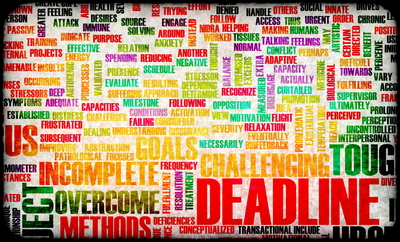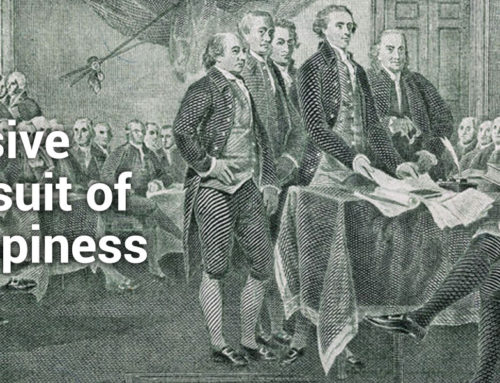In previous blogs (here and here), I have presented a comprehensive model of leadership that I have labeled The Performance Trilogy®. The framework describes the three fundamental processes that must be managed; strategy, execution, and leadership development and the three leadership roles needed for each process; leading, managing and coaching. Leading each of the three processes of the Performance Trilogy® requires very different attributes (i.e. talent and skills). The three most important attributes needed to successfully lead the strategy process are imagination, courage and persuasiveness. The three most important attributes needed to successfully manage the execution process are conscientiousness, productivity and discernment. The three most important attributes needed to successfully coach the leadership development process are integrity, empathy, and teaching skills. These nine attributes are universal and essential for sustainable success in any endeavor you pursue. In this blog we will explore the second of these management attributes required during the execution process, productivity.
Productivity – The ability to manage one’s energy and focus
Newly appointed managers often feel overwhelmed by the amount of responsibility they have acquired, and the work needed to be done to stay on top of things. Technical staff accustomed to focusing on a selectively few subjects suddenly find themselves overwhelmed with tens to hundreds of “events”. Making a successful transition from technical expert to manager requires awareness that there are not enough hours in the day to play an active role in every item that comes across your desk. The quicker that one learns how to prioritize and delegate (i.e. get organized) the faster they will absorb the responsibilities of the job and execute responsibly.
Newly appointed managers find out quickly that the scarcest resource they have to manage is their own time. Being organized is often equated to managing your time. The term “time management” is a misnomer as we all know that time cannot be managed. The minutes and hours of every day will pass according to schedule regardless of our actions. A better way to view being organized is to manage the events (or tasks) that we are involved in and the information we are required to process. In a typical day, most managers are whipsawed from one event to another without a lot of time to spend on any one of them. In addition, they are responsible for processing an enormous amount of information that comes across their desk. Fortunately, methods and tools have been developed to help managers cope with the volume of events and information to be processed and acted upon. If you are still using the same methods and tools to manage events and information that you used 10 years ago, I assure you that you will not be able to keep up with the speed of your colleagues that have acquired the latest organizational tools.
The short overview of the latest organizational tools involves two critical steps, effective prioritizing and efficient processing. In his book, First Things First, Steven Covey provides an excellent tool for prioritization. He characterizes all events and information in a two-dimensional matrix: those that are important and those that are urgent. The first priority is to address all those events and information that are both urgent and important. These are events that you must tackle or information you must process immediately. It is up to you to determine the importance of any event or piece of information in all aspects of your life not just work. I consistently advise managers to list the top ten most important priorities in their life and to determine how much time they allocate to each one on a weekly basis. The results of this exercise are revealing and often shocking. In their professional work environment, I insist that they make sure that their annual performance objectives are close to 100% aligned with their strategy and they allocate a majority of every workday on advancing these objectives. While this seems intuitively obvious, I have rarely seen this practiced.
The second priority is those events that are important but not urgent. These events are the most neglected and, in many ways, the most important for effective prioritization. If you reflect on this category, it represents those events and information that are important but do not have to be done right away. In time however, they will eventually move into the important and urgent category. The more that you can tackle important events and information before they become urgent, the more on top of your job you will be and the less stress you will cause yourself and those who need to support you. This requires a planning discipline and the ability to avoid procrastination. For example, most managers list family as a highly important priority, but when evaluating how much time they spend with their family on a weekly basis they fall way short of expectations. The excuse that they have too much work to do is a poor one when one adds up all of the time they spend on non-important and non-urgent activities that have little to do with important work activities (a quick check on the time spent on answering unimportant phone calls and emails will quickly prove my point).
The third and fourth priorities, urgent but not important and not urgent and not important are the categories that are the major time wasters and once identified can really free up one’s time. Lest you interpret the above exercise as leading to all work and no play, let me offer you a different point of view to think about, “only the organized can loaf”. By only focusing on the important (including recovery and relaxation time) and urgent priorities, you will experience less stress and more freedom to pursue those activities that really count.
Once you have completed step one and prioritized your workload you can then focus on step two, processing that workload in an efficient manner. Bear in mind that prioritization is a never-ending process and you must reprioritize regularly. Even when you have identified all the important events that you need to pay attention to (both urgent and non-urgent), there is still an enormous amount of work to be done. Despite how good a memory you may have, when you get to a managerial level, the number of events you need to stay on top of and amount of information you need to process is still daunting. You have probably figured out those traditional tools such as to do lists and calendars are no longer sufficient to manage all the important events and information in your life. I highly recommend reading John Allen’s book on Getting Things Done. It is a systematic, no nonsense approach to efficiently acquiring, processing, and storing information, and retrieving it when you need it.
A sure sign that a person is overwhelmed with his job and not utilizing the latest tools is when you get a request to resend an email, to extend the date of a deliverable, or an apology for being a bottleneck in reviewing a report. The problem is not a lack of time but a lack of clarity on the actions needed to produce the desired outcomes. Allen’s approach is twofold; capture all of the information and events that you need to manage in a trusted system outside your mind that you know you can come back to regularly, kind of like an external hard drive. And disciplining yourself to make front-end decisions about all of the inputs that you let into your life so that you will always have a plan for next actions that you can implement at any moment.
It is a waste of time and highly stressful to be thinking about something that you make no progress on and fearing that you have forgotten something important. When you have a trusted system that stores all of your important information with the ability to retrieve it whenever you wish, you then can free up your mind (or your available RAM) to have the ability to dedicate 100% of your attention to events or information of your choosing with no distraction. This was a giant leap in my level of awareness and helped me tremendously in becoming more organized, getting a lot more done with less effort. It is quite liberating to be able to take on new commitments knowing that you have the time available based reviewing your entire workload.
Graffeo and Associates is an organization committed to improving the quality of leadership in science and technology (S&T). It was formed in 2008 around the expertise of Dr. Tony Graffeo, a senior executive from Arthur D. Little and Battelle Memorial Institute. Dr. Graffeo has consulted with leading research institutions in the United States, Europe, Latin America and the Middle East, and has created a codified system of leadership development centered around the principles of the Performance Trilogy® which he has taught throughout the world. He is currently a professor at Northeastern University teaching Professional Masters entrepreneurship and leadership courses. His new book, titled “Leading Science & Technology-Based Organizations: Mastering the Fundamentals of Personal, Managerial, and Executive Leadership” will be published in 2018.



